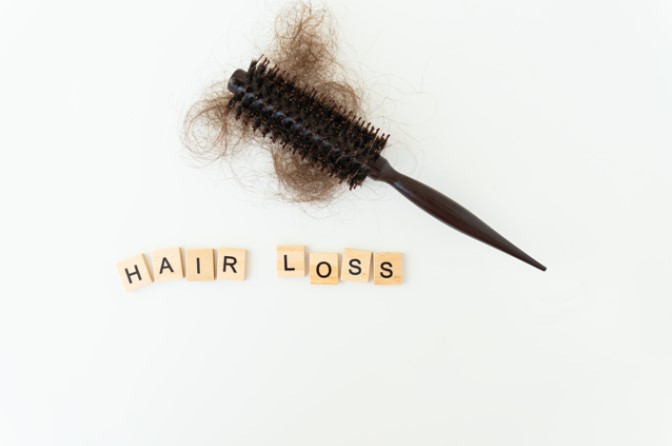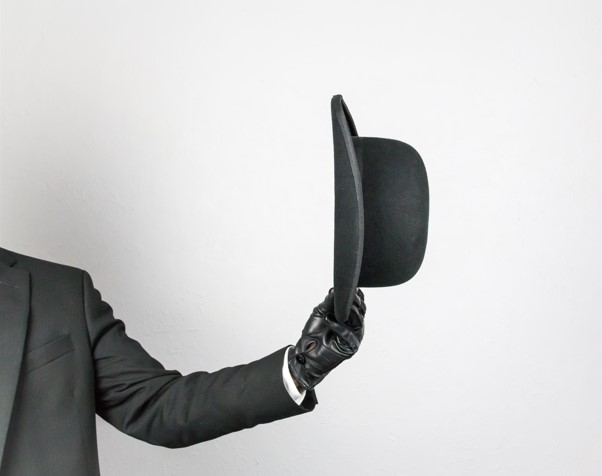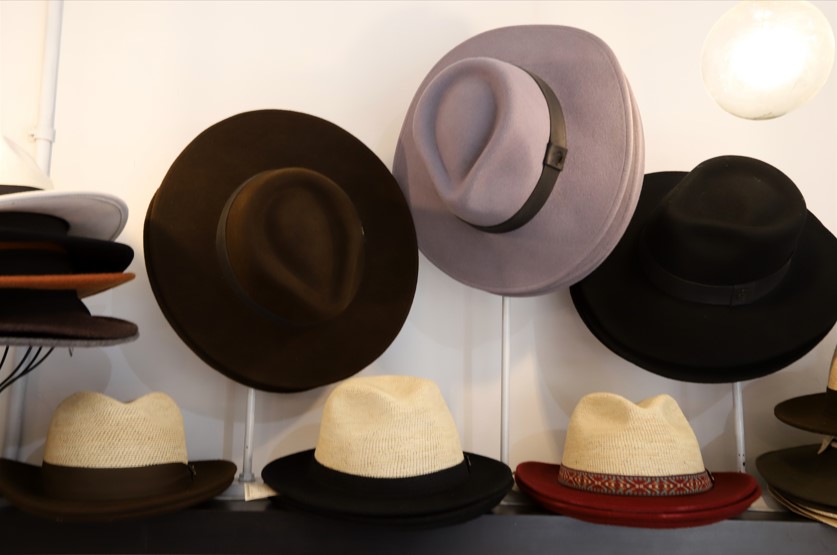
Hats have been worn for centuries, serving various purposes such as fashion statements, religious significance, or protection from the elements. But have you ever wondered, “can hats cause hair loss?” This long-standing debate has left many people questioning whether their favorite headgear might be causing them more harm than good.
In this blog post, we will delve into the connection between hats and hair loss, debunk common myths surrounding the question “can hats cause hair loss?”, and provide essential tips for hat wearers to prevent hair loss. So, let’s get started and uncover the truth behind hats and hair loss.
Key Takeaways
- Wearing a hat does not cause hair loss, although certain types of hair loss may be related to hats.
- Traction alopecia and friction-related hair loss can occur from wearing tight or ill-fitting hats. Proper fitting and cleaning are key for prevention.
- Wearing a hat provides protection against UV rays and environmental factors while maintaining healthy scalp health.
The Hat and Hair Loss Connection
The belief that hat wearing leads to hair loss has been circulating for quite some time. However, research has shown that there is no substantial scientific evidence to suggest that wearing a hat is a significant contributing factor to male pattern hair loss or female pattern baldness. In fact, genetics and hormones play a far more significant role in gradual hair loss than wearing a hat.

That being said, certain types of hair loss, such as traction alopecia and friction-related hair loss, can indeed be attributed to hats. Before addressing these specific cases, the myth surrounding hats and hair loss needs to be debunked first.
The Myth of Hats and Hair Loss
The notion that hats cause hair loss is mainly based on anecdotal evidence, with people claiming that they have observed hair thinning or receding hairlines after consistently wearing hats. However, scientific research has not found any significant correlation between wearing hats and hair loss.
In fact, male pattern baldness and female pattern hair loss, also known as androgenic alopecia, are primarily caused by genetic and hormonal factors. Thus, even if it seems that wearing a hat is causing hair loss, the actual cause is more likely a genetic predisposition to pattern hair loss, with hats having minimal or no role in the process, debunking the myth that “hat cause hair loss.”
The Role of Genetics and Hormones

Genetics and hormones, particularly dihydrotestosterone (DHT), are the primary factors behind hair loss. DHT, a hormone produced as a byproduct of testosterone, can bind to hair follicles and cause gradual follicular miniaturization, ultimately leading to a cessation of new hair production and the need for hair restoration.
Androgenic alopecia, the most prevalent type of hair loss, affects both men and women, with the hair loss patterns differing between the sexes. Men usually experience a receding hairline and thinning on the crown, while women tend to experience overall thinning of the hair. In these cases, wearing a hat has little to no impact on the hair loss process, as the root cause lies in genetics and hormones.
Types of Hair Loss Related to Hats

Although wearing a hat is not a major cause of hair loss, there are two types of hair loss that can be linked to hats: traction alopecia and friction-related hair loss. Recognizing these specific instances is key to understanding how to prevent hair loss while wearing a hat.
Traction alopecia occurs when tight hats or hairstyles pull on the hair follicles, causing hair loss over time. On the other hand, friction-related hair loss can result from a hat constantly rubbing against the scalp, leading to hair breakage and damage to hair follicles.
Traction Alopecia
Traction alopecia is a reversible form of hair loss caused by tight hats or hairstyles that exert a pulling force on the hair roots, such as braids, dreadlocks, or tight ponytails. This continuous tension on the hair follicles can lead to hair loss over time if not addressed.
Preventing traction alopecia involves:
- Choosing a hat that fits comfortably without being overly snug
- Avoiding tight hairstyles that stress the hair follicles excessively
- Taking breaks from wearing hats
By following these steps, you can reduce the risk of developing traction alopecia.
Friction-Related Hair Loss
Friction-related hair loss, also referred to as friction alopecia or traction alopecia, occurs when a hat is worn consistently and rubs against the scalp, resulting in hair breakage and damage to hair follicles. This type of hair loss can be exacerbated if the hat is worn on wet hair, as it can increase the risk of scalp irritation.
Preventing friction-related hair loss requires:
- Selecting a well-fitting hat, neither too tight nor too loose
- Ensuring the hat is clean to avoid buildup of dirt, sweat, and bacteria causing scalp irritation
- Avoiding wearing hats on wet hair to minimize the risk of this type of hair loss.
The Benefits of Wearing a Hat

Despite the potential hair loss risks associated with improper hat wear, there are numerous benefits to wearing a hat. Hats can provide protection from the sun’s harmful UV rays and shield the hair from environmental factors like pollution and wind.
Sun protection is essential for maintaining healthy hair and scalp, as excessive sun exposure can lead to hair damage and increase the risk of skin cancer. Furthermore, environmental factors like pollution and wind can cause hair damage and breakage, which can be mitigated by wearing a hat.
Sun Protection
Sun protection is crucial for maintaining the health of your hair and scalp. Excessive sun exposure can cause damage such as dryness, discoloration, and even increase the risk of skin cancer. Wearing a hat can offer excellent protection against the sun’s damaging UV rays by blocking the rays and reducing the amount of exposure to the skin.
In addition to wearing a hat, using UV-protective hair products and limiting sun exposure are also effective strategies for safeguarding your hair from the sun. Adopting these precautions can maintain your hair health and minimize the risk of sun-induced hair damage.
Environmental Factors
Hats can play a significant role in protecting your hair from various environmental factors, such as pollution and wind. Pollution can cause hair damage and scalp irritation, while wind can lead to hair breakage and tangles.
Wearing a hat creates a barrier between your hair and these environmental factors, thereby protecting your hair from damage and breakage. So, not only do hats provide sun protection, but they also shield your hair from other harmful elements, highlighting the importance of wearing a hat when necessary.
Tips for Hat Wearers to Prevent Hair Loss

Having explored the connection between hats and hair loss, as well as the benefits of wearing a hat, sharing some tips on how to prevent hair loss while wearing a hat becomes pertinent. Choosing the right fit and keeping your hat clean are crucial factors in avoiding hair loss caused by traction alopecia and friction-related hair loss.
By following these tips, you can continue to enjoy wearing hats without worrying about the potential risks of hair loss. Now, let’s delve into these important tips for hat wearers.
Choose the Right Fit
One of the most critical aspects of preventing hair loss while wearing a hat is choosing the right fit. A hat that is too tight can cause traction alopecia, while a hat that is too loose can lead to friction-related hair loss.
To find the correct size for a hat, follow these steps:
- Measure the circumference of your head just above your ears.
- Refer to a hat fitting guide or size chart to determine your hat size.
- Some hats may also come with sizing tape to ensure an optimal fit.
Opting for a comfortable, well-fitting hat minimizes the risk of hair loss and helps to prevent lose hair associated with very tight hat wearing.
Keep Your Hat Clean
Keeping your hat clean is another essential step in preventing hair loss while wearing a hat. A dirty hat can accumulate dirt, sweat, and bacteria, which can cause scalp irritation and hair loss.
To maintain the cleanliness of your hat, follow these steps:
- Fill a sink or bucket with warm water.
- Add a tablespoon of laundry detergent or OxiClean.
- Gently scrub the hat using a soft brush or cloth.
- Rinse thoroughly with clean water.
- Allow the hat to air dry completely before wearing or storing it.
It’s recommended to clean your hat at least once a month or more frequently if worn on a regular basis.
Summary
In conclusion, the myth that hats cause hair loss can be put to rest. Genetics and hormones play a far more significant role in hair loss than wearing a hat. However, it’s essential to recognize the specific cases of traction alopecia and friction-related hair loss that can be associated with hat wearing.
By choosing the right fit, keeping your hat clean, and taking breaks from wearing hats, you can enjoy the benefits of wearing a hat without worrying about hair loss. Protect your hair and scalp from the sun and environmental factors while confidently rocking your favorite headgear.
